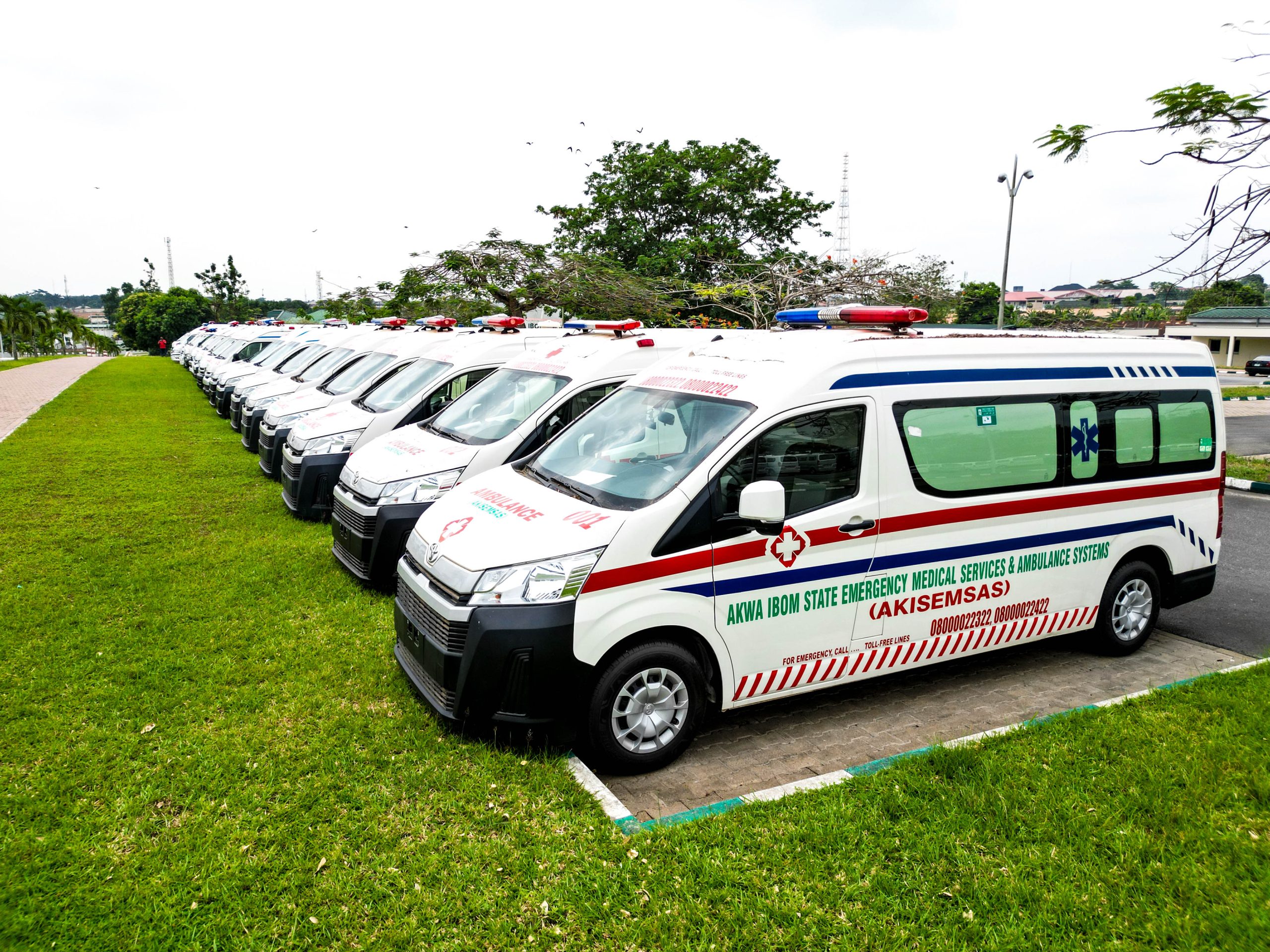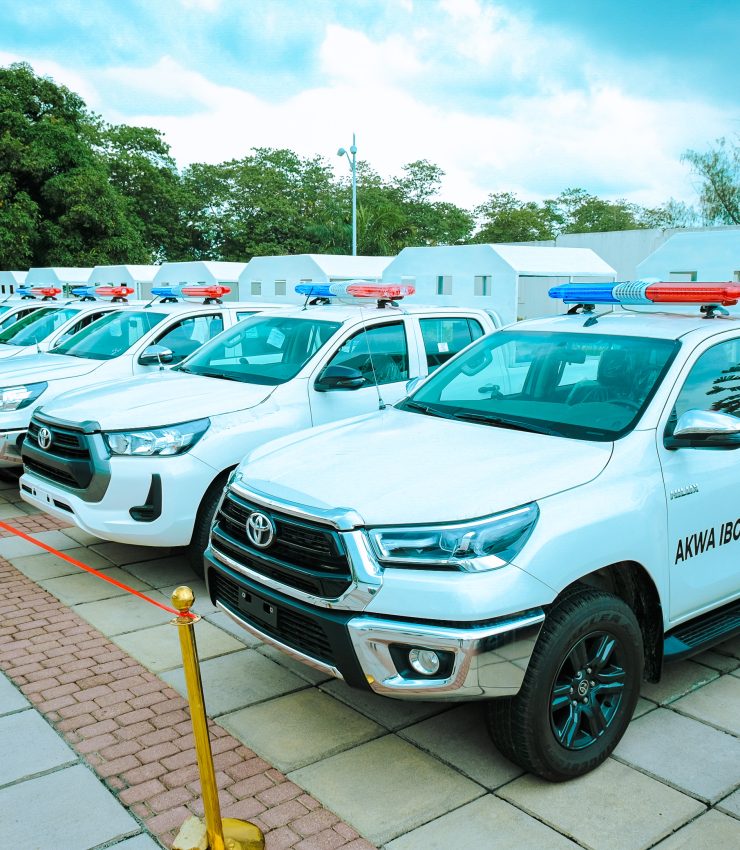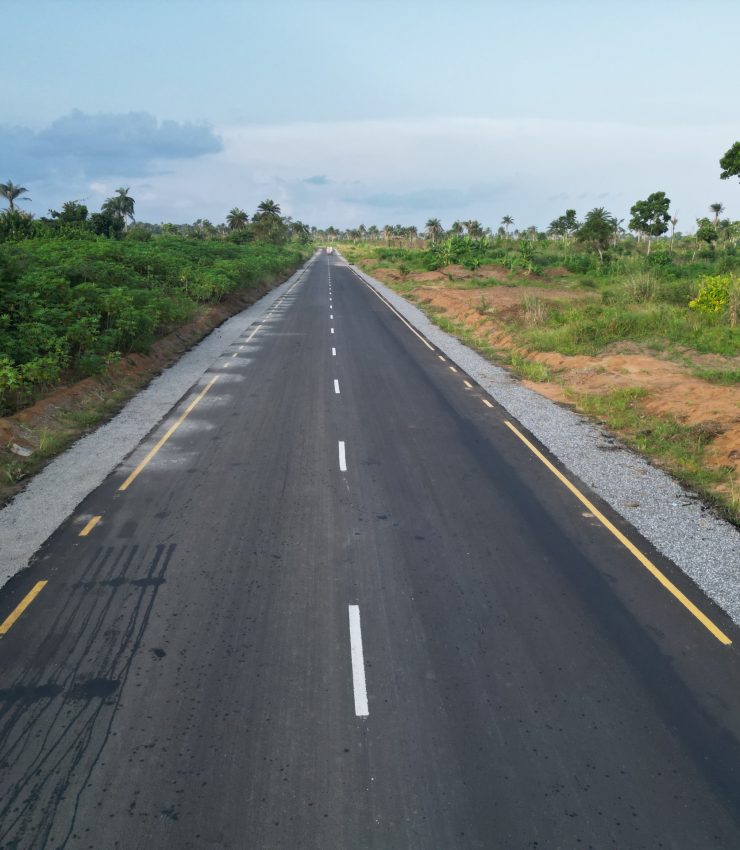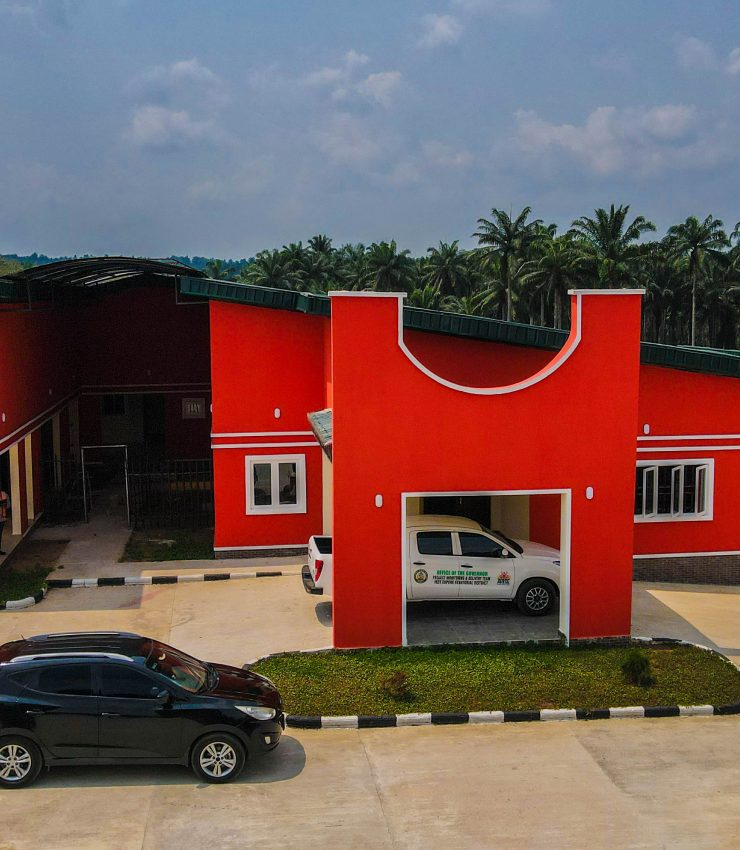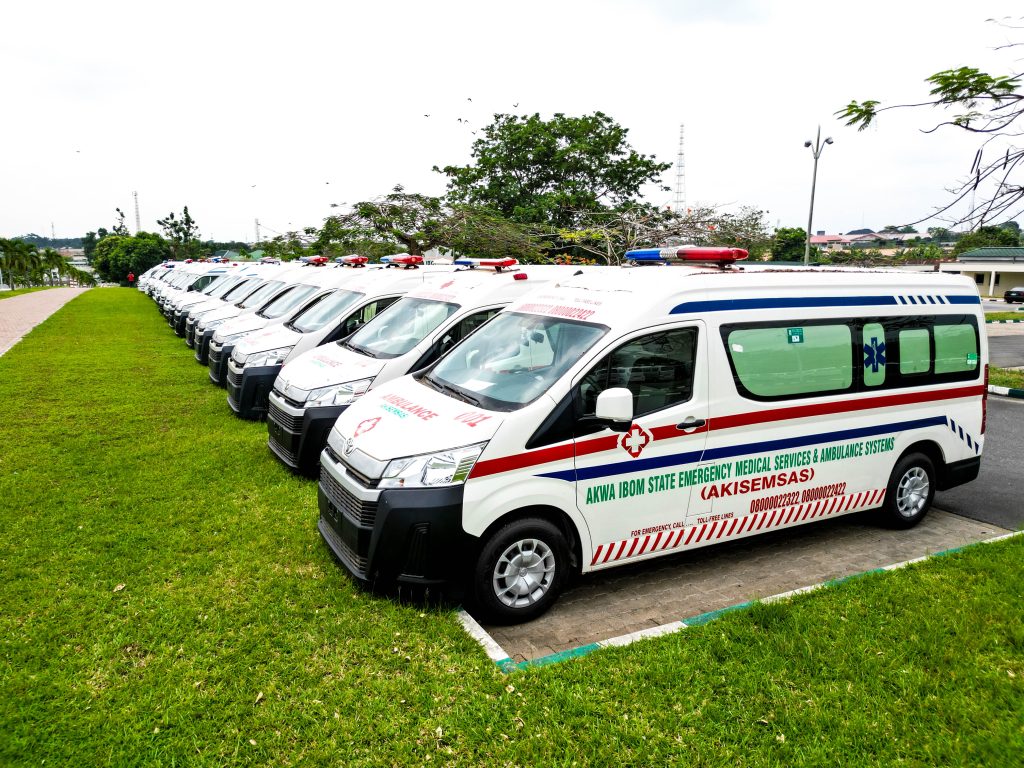
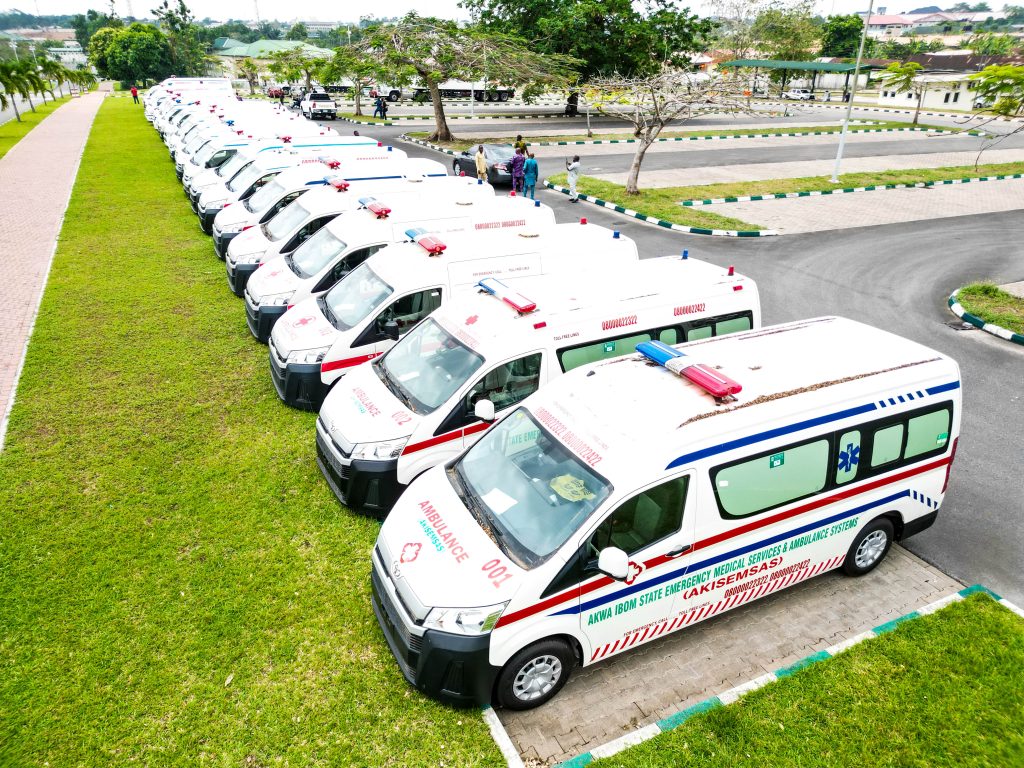
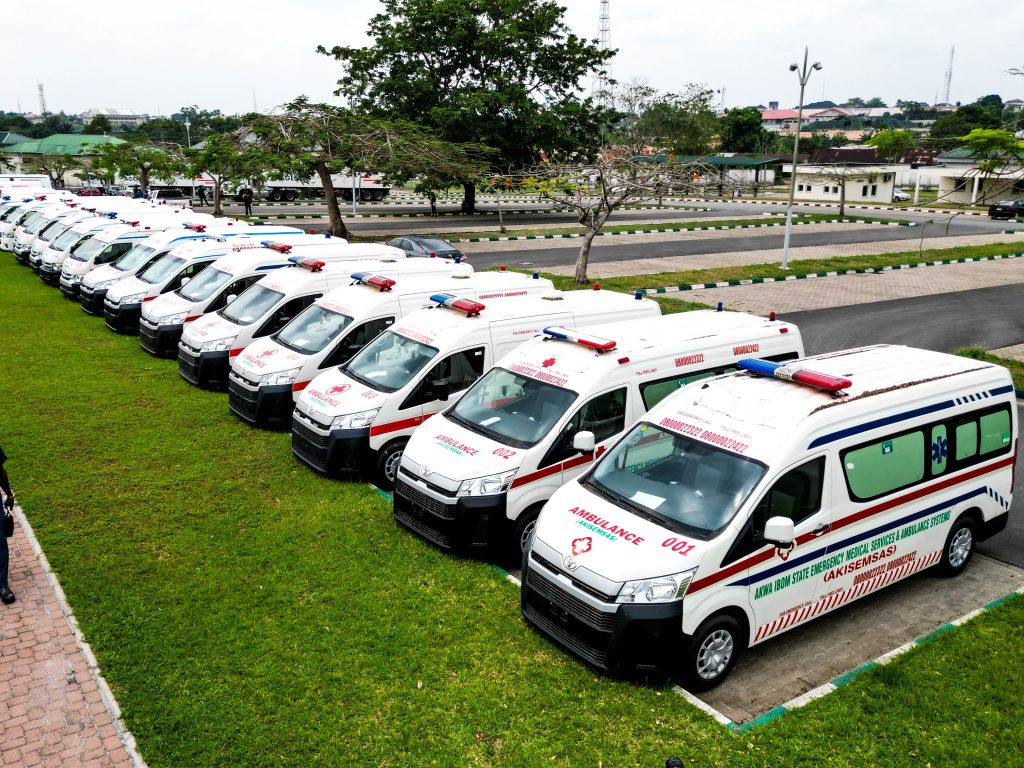
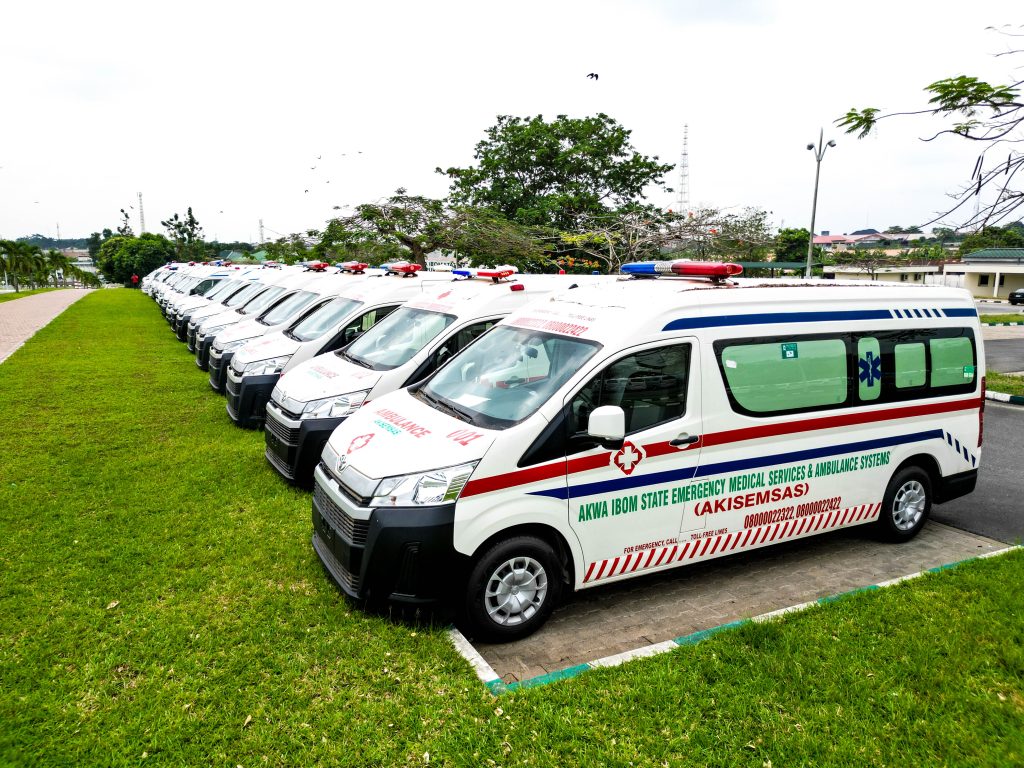
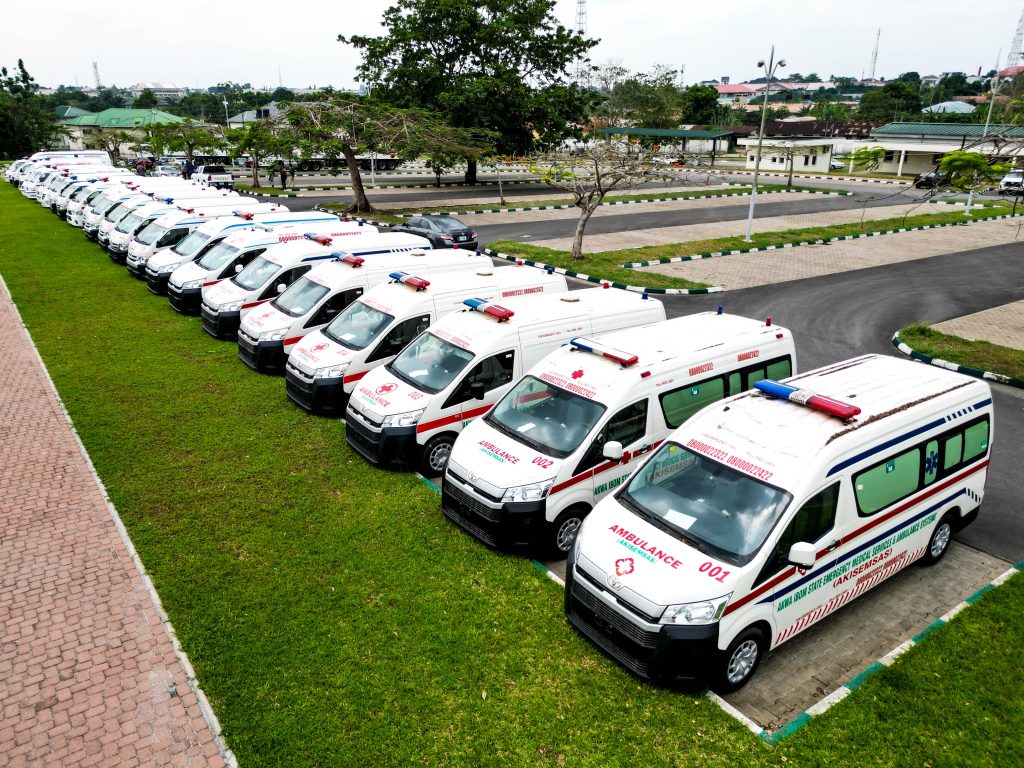
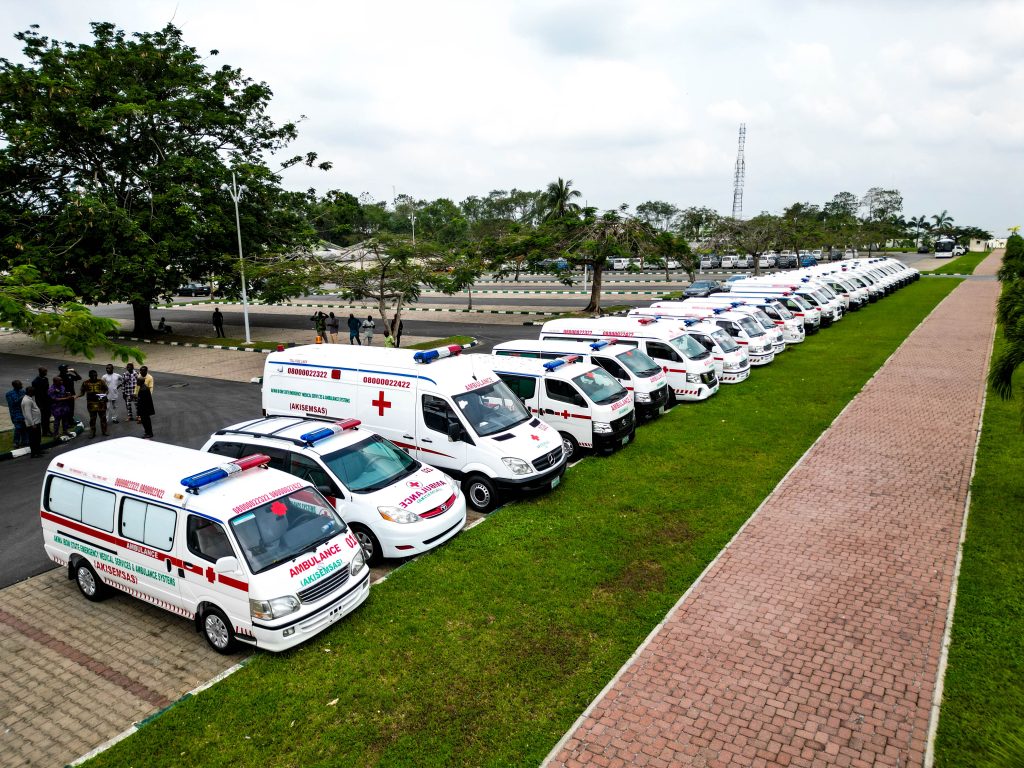
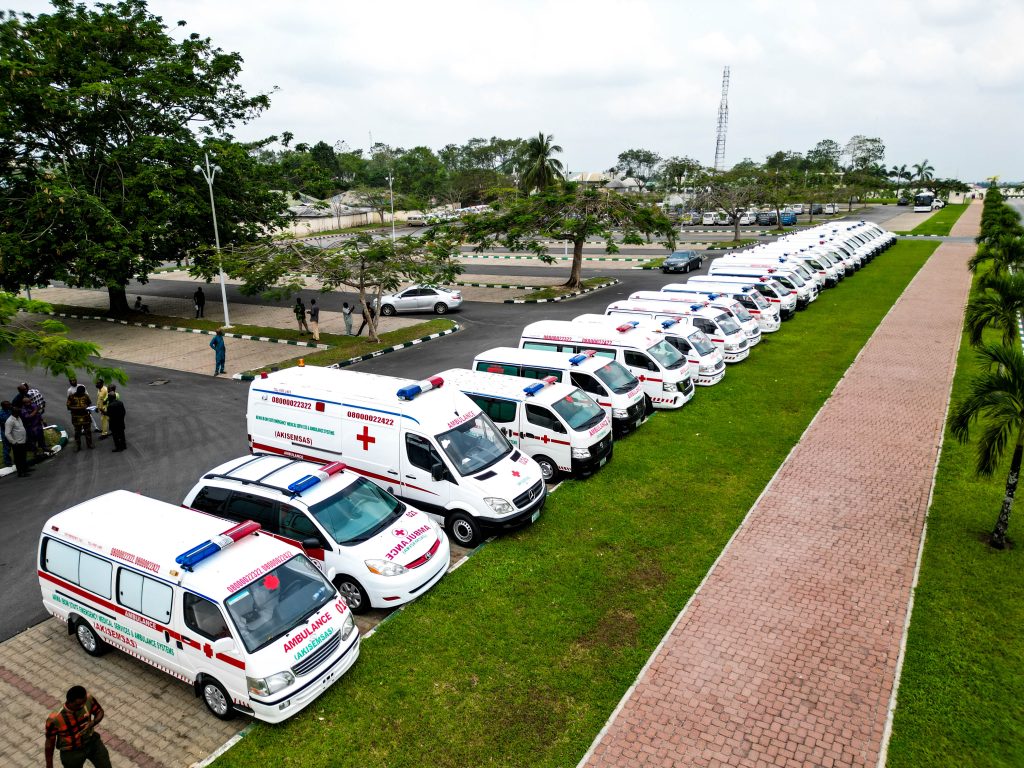
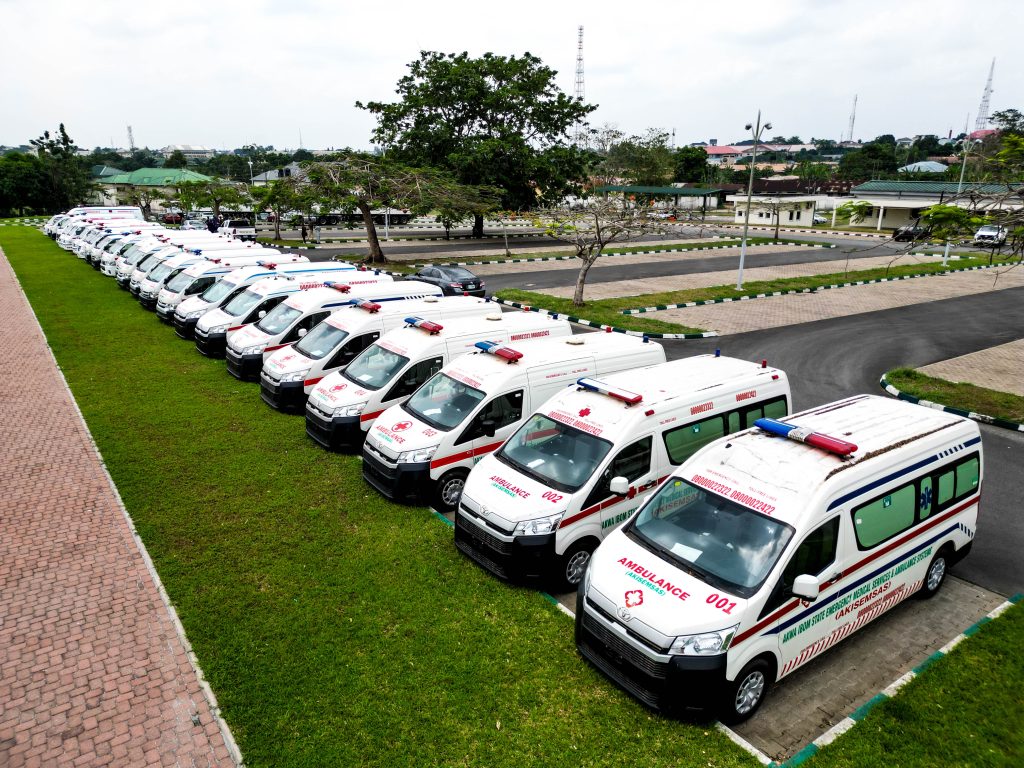
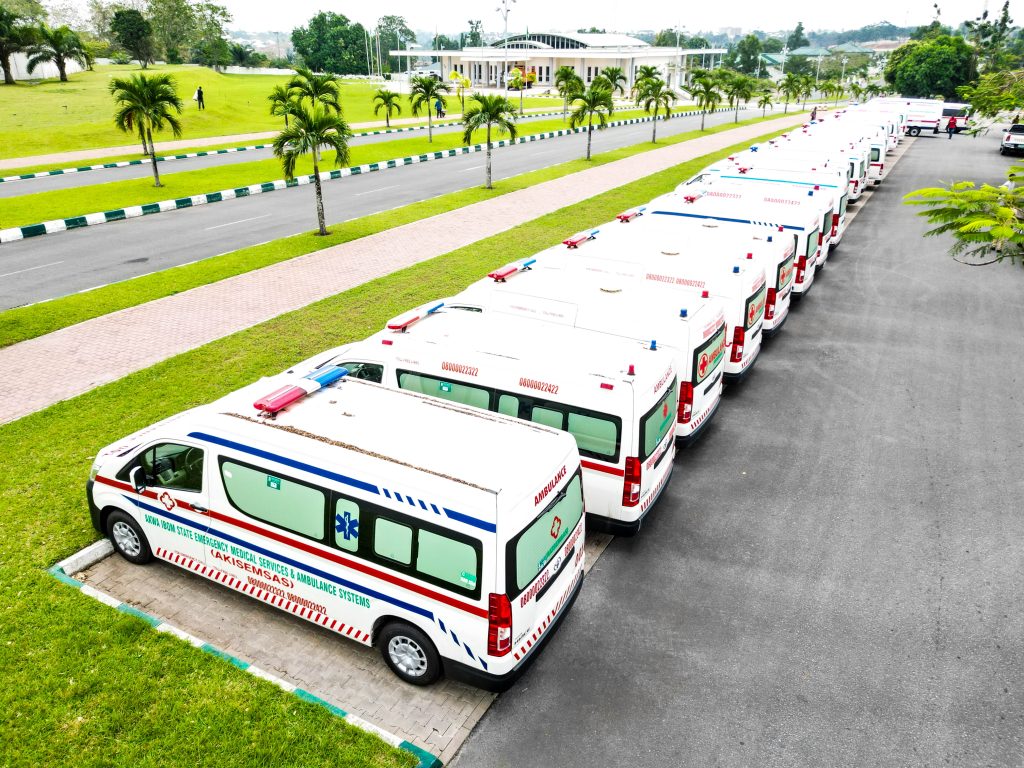
About the Akwa lbom State Emergency Medical Service and Ambulance Systems [AKISEMSAS)
Introduction
The Akwa Ibom State Government is launching a state-of-the-art Emergency Medical Service andAmbulance System (AKISEMSAS) to enhance emergency healthcare response across the state. This initiative is a significant step towards strengthening the healthcare system by ensuring swift,high-qualityemergency medical care is available to all citizens, regardless of location or socioeconomic status.
Key Components of the Initiative
1.Fleet of Ambulances
The service already has 29 ambulances:
-16 Basic Life Support (BLS) ambulances for standard emergency response.
-10 Advanced Life Support (ALS)ambulances with specialized equipment for critical care.
-3 Mobile Intensive Care Units (ICUs) for the most severe medical emergencies.
2.State-of-the-Art Call Center
-Toll-free emergency lines available 24/7.
-Real-time coordination between emergency responders and hospitals.
3.Modern Medical Technology & Monitoring
-Telemedicine integration for remote medical assistance.
-Dash cameras for real-time monitoring by physicians.
-GPS tracking and 24/7 surveillance with geofencing for optimal dispatch and safety.
4.Strategic Ambulance Positioning
-Ambulances will be stationed along major highways and across all 10 federal constituencies for rapid response.
-Targeted response time of 30 minutes or less for emergency calls.
5.Healthcare Accessibility & Cost Structure
-First 48 hours of emergency care is free for vulnerable, elderly and individuals to ensure stabilizationand initial treatment.
-Subsidized paid service for extended care and specialized treatments.
-Free maternal transport program for pregnant women in labor.
-Rural ambulance service to ensure coverage in remote areas.-Impact of AKISEMSAS on Akwa Ibom State
1.Health Sector Impact
A. Reduced mortality rates: Faster emergency response and high-quality pre
-hospital care wisignificantly reduce preventable deaths from accidents, strokes, heart attacks, and other medical emergencies.
B. Improved maternal and infant health: The free maternal transport program will decreascomplications and fatalities related to childbirth.
C. Better rural healthcare access: Residents in remote areas will receive life-saving emergency care without transportation barriers.
D. Enhanced quality of care: Telemedicine and real-time physician monitoring will improve treatment precision and outcomes.
2. Social Impact
A.Increased public safety. People will have confidence in the emergency response system, reducing fears associated with accidents or sudden illnesses.
B. Support for vulnerable populations: Free initial care ensures that financial constraints do not prevent emergency treatment.
C. Improved public trust in government healthcare initiatives.
D. Job creation: The program will create employment opportunities for paramedics, call center staff, and technical support teams.
3. Economic Impact
A. Reduction in economic losses due to health emergencies: Quick medical intervention will prevent ong-term disability and loss of productivity among citizens.
B. Boost to the healthcare sector: The demand for medical supplies, equipment maintenance, and personnel training will stimulate local businesses and investment in health infrastructure.
C. Cost savings for families: Free emergency care for the first 48 hours reduces the financial burden on amilies during critical situations.
D. Increased investor confidence: A strong healthcare system makes the state more attractive for rusinesses and investors.
Conclusion
The Emergency Medical Service and Ambulance System (AKEMSAS) is a game-changer in Akwa bom itate’s healthcare landscape. By ensuring quick, efficient, and high-quality emergency medical care, lis initiative will save lives, improve public health outcomes, and enhance economic development.
The combination of modern medical technology, well-trained personnel, and a structured service model nsures that every citizen, regardless of their financial status or location, has access to emergency ealthcare when they need it the most.

